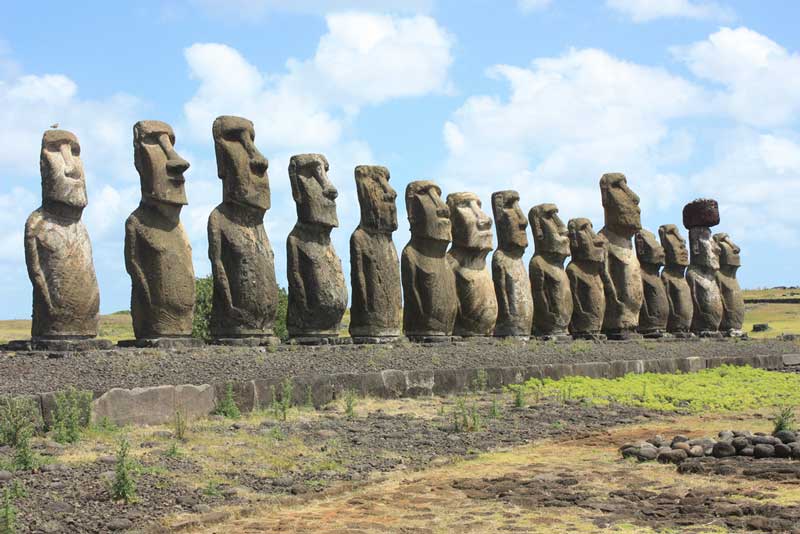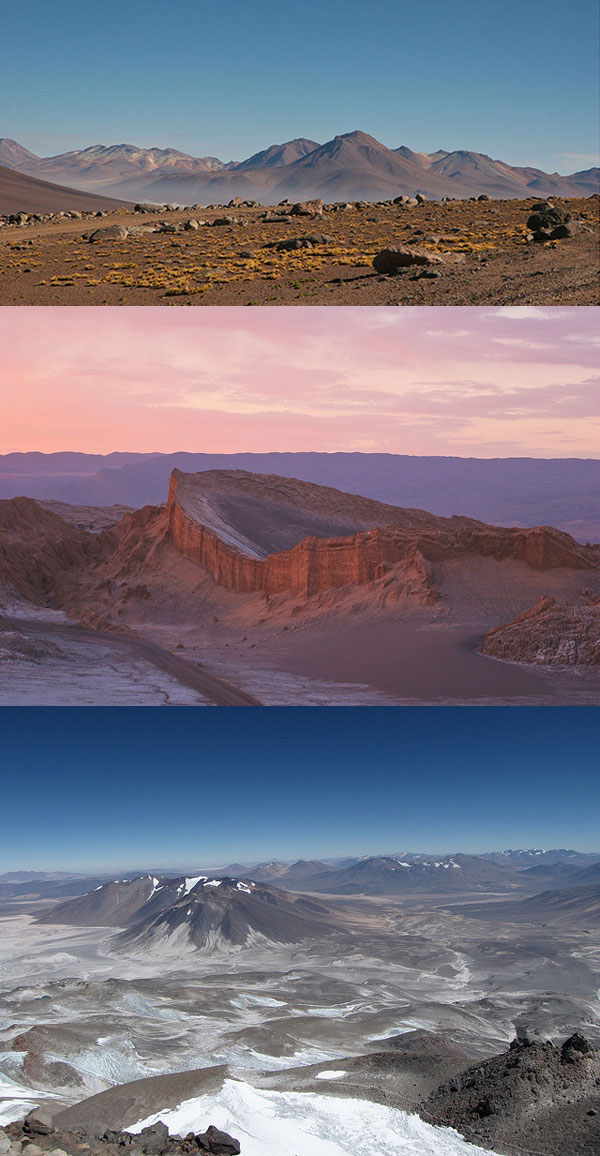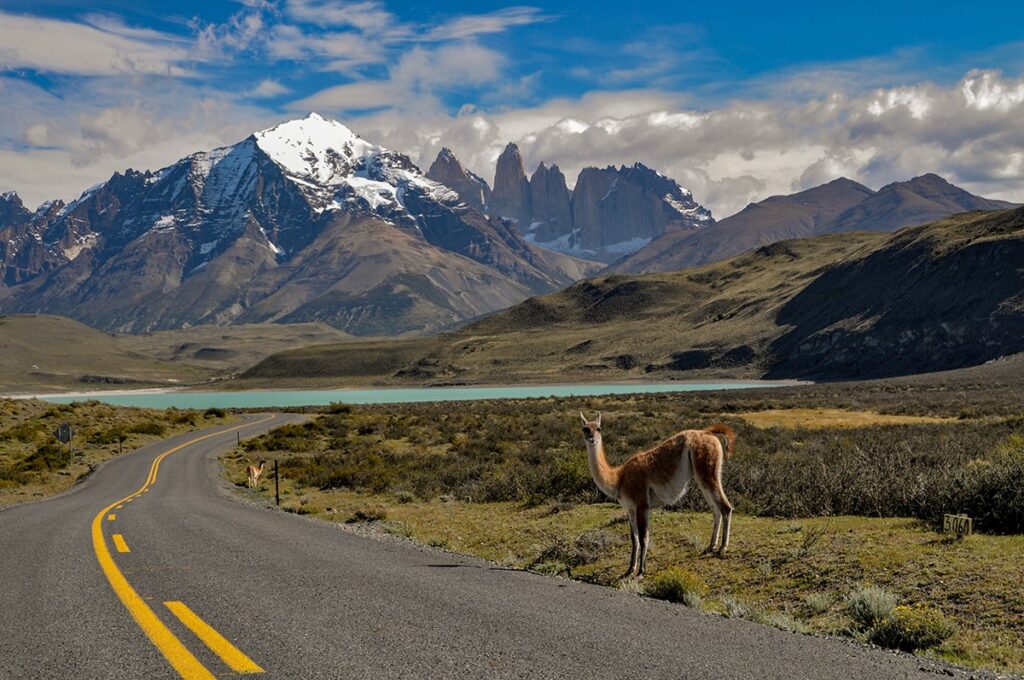1. Santiago: The capital Santiago is home to around 7 million Chileans – that’s about 36% of the total population
2. Easter Island: Easter Island – known for its 887 mysterious giant statues (moai) – is Chilean territory. Easter Island is also the world’s most isolated island and is located 3,700 km off the coast of Chile
3. The Atacama Desert: In northern Chile, the Atacama Desert is the driest place on earth. Here it rains less than 0.05 mm per year
4. The land of poets: Chileans themselves call their country ‘país de poetas’, meaning ‘land of poets’. This is not without reason, as Chile’s only two Nobel Prize winners won the prize in literature (Gabriela Mistral in 1945 and Pablo Neruda in 1971)
5. Mountains: The Andes – the world’s longest mountain range – run throughout Chile (from south to north) and cover around 80% of the country

Fact: Easter Island – best known for its 887 mysterious stone giants – is Chilean territory
6. Ojos del Salado: The Ojos del Salado volcano in the Andes (on the border between Chile and Argentina) is located at an altitude of 6,390 meters and is the world’s highest volcano. Ojos del Salado also contains a crater lake, making it the highest lake in the world
7. Economic stability: Chile is one of the richest and most economically stable countries in South America
8. Sport: The most popular sport in Chile is undoubtedly soccer. However, tennis is considered the country’s most successful sport. The national sport is rodeo
9. Independence: Chile’s war of independence against the Spanish took place between 1810 and 1826. Chile’s National Day (Fiestas Patrias) is celebrated every year on September 18 and 19 to commemorate independence. Since 1967, it has been mandatory to fly the Chilean flag on all public buildings during Fiestas Patrias. The flag must be in perfect condition and hang correctly from a flagpole or building facade – failure to comply with the law can result in fines of up to 40,000 pesos (approx. 80 USD)
10. Name: The origin of the name ‘Chile’ is unknown. Many believe it comes from the Native American word ‘tchilli’, which means ‘snow’ or ‘deepest point of the earth’. Other theories suggest that it comes from the word ‘chili’ (Mapuche) meaning “where the land ends” or the word ‘chiri’ (Quechua) meaning “cold”

Fact: Chile is home to the world’s driest place ‘Atacama Desert’ (top and center) and the world’s highest volcano ‘Ojos del Salado’ (bottom). The volcano also contains the world’s highest lake





